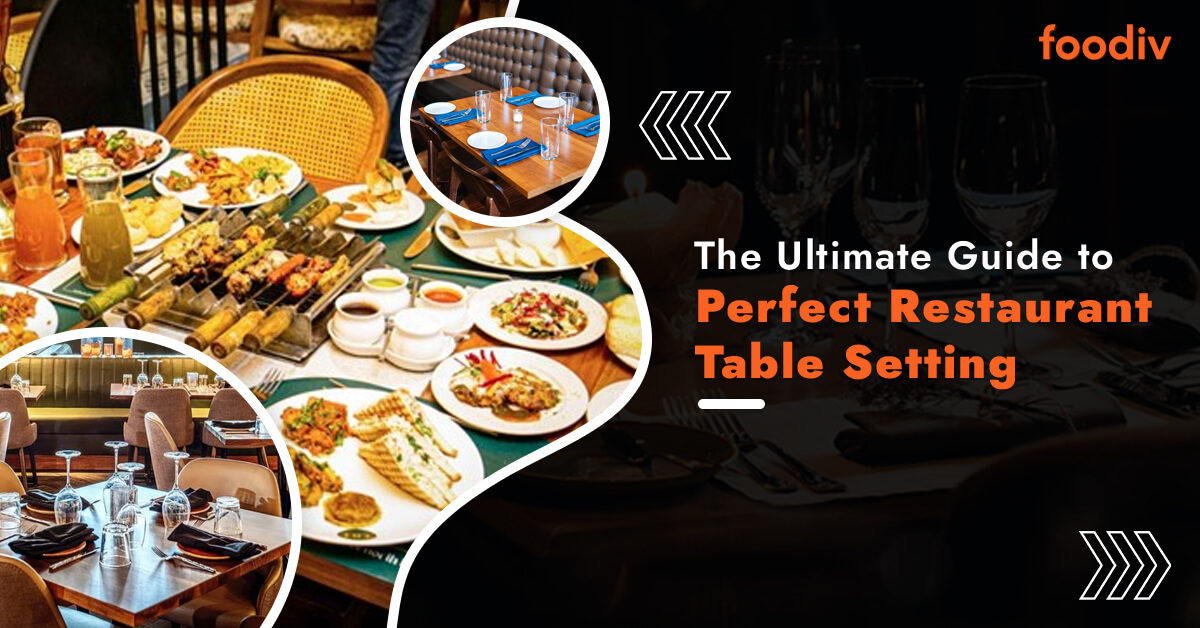 A well-arranged restaurant table setting is more than just an aesthetic element, it is a cornerstone of an exceptional dining experience. From casual cafes to fine-dining establishments, a thoughtful table arrangement reflects the restaurant’s style, commitment to quality, and attention to detail. Guests often form their first impressions based on how the table is set, making it a crucial aspect of creating a warm and welcoming atmosphere. Properly arranged tables not only enhance the visual appeal but also ensure functionality and comfort for diners. This guide will walk you through mastering the art of restaurant table setting, helping you elevate your customers’ dining experience while strengthening your brand identity.
A well-arranged restaurant table setting is more than just an aesthetic element, it is a cornerstone of an exceptional dining experience. From casual cafes to fine-dining establishments, a thoughtful table arrangement reflects the restaurant’s style, commitment to quality, and attention to detail. Guests often form their first impressions based on how the table is set, making it a crucial aspect of creating a warm and welcoming atmosphere. Properly arranged tables not only enhance the visual appeal but also ensure functionality and comfort for diners. This guide will walk you through mastering the art of restaurant table setting, helping you elevate your customers’ dining experience while strengthening your brand identity.
Importance of Restaurant Table Setting
The restaurant table setting plays a vital role in creating a memorable dining experience for guests. A well-set table not only enhances the visual appeal of the dining area but also sets the tone for the meal, reflecting the restaurant’s theme and ambiance. It ensures diners feel comfortable and cared for, which encourages positive reviews and repeat visits. Additionally, an organized table setting demonstrates professionalism and attention to detail, helping to build trust and credibility with customers whether it’s a casual meal or a formal occasion, a thoughtfully arranged table can make all the difference in transforming an ordinary visit into an extraordinary experience.
Key Elements You Need for Successful Restaurant Table Setting
A flawless restaurant table setting relies on assembling the right elements with precision and style. Here are the key components:
- Tablecloths and Placemats: Use clean, well-ironed tablecloths or stylish placemats to create a polished base.
- Dinnerware: Arrange plates, bowls, and charger plates to match the meal type and restaurant’s theme.
- Glassware: Position water glasses, wine glasses, and other drinkware appropriately for easy access.
- Cutlery: Place forks, knives, and spoons in the correct order of use, ensuring alignment and spacing.
- Napkins: Add a creative touch with folded napkins or themed designs.
- Centerpieces: Incorporate minimalistic or seasonal centerpieces to enhance visual appeal without overcrowding.
Each of these elements contributes to a seamless and enjoyable dining experience while leaving a lasting impression on your guests.
Basic Rules for Restaurant Table Setting
To achieve a polished restaurant table setting, follow these fundamental rules:
- Cleanliness First: Ensure tables are clean, stable, and covered with wrinkle-free tablecloths or placemats.
- Uniform Dinnerware Placement: Position plates at the center of each seat, maintaining uniform alignment across the table.
- Follow the “Outside-In” Rule: Arrange cutlery so that utensils used first are farthest from the plate.
- Proper Glassware Positioning: Place glasses above the knives, arranged left to right based on the drink courses.
- Napkin Presentation: Use neatly folded napkins or creative designs for added elegance.
- Adequate Spacing: Leave enough space between settings to avoid overcrowding and ensure diner comfort.
These guidelines create a visually appealing and functional table layout that enhances the dining experience.
Best Practices for Consistent Restaurant Table Setting
Consistency is key when it comes to creating a professional and visually appealing restaurant table setting. Here are some best practices to maintain uniformity and elevate your presentation:
- Establish Clear Standards: Create a detailed guide or checklist for table settings, specifying the placement of each element.
- Staff Training: Train your team thoroughly to ensure they understand and follow the established guidelines. Regular refresher sessions can help maintain consistency.
- Inspect Before Service: Conduct pre-service inspections to ensure all tables meet the required standards. Look for symmetry, cleanliness, and proper alignment.
- Hygiene is Non-Negotiable: Prioritize the cleanliness of tablecloths, dinnerware, cutlery, and glassware. Replace any damaged or stained items immediately.
- Seasonal and Thematic Adjustments: Update table settings to reflect seasonal or special themes while staying consistent with the restaurant’s branding.
- Use Quality Materials: Invest in durable and high-quality tableware, ensuring a premium look and feel for your diners.
- Feedback Loop: Encourage staff to share insights and feedback about table-setting challenges, fostering continuous improvement.
Maintaining these best practices ensures a cohesive presentation that impresses guests, enhances the dining experience, and reflects the professionalism of your establishment. Uniform table settings also save time and minimize errors, allowing your team to focus on delivering excellent service.
Types of Restaurant Table Settings Every Restaurant Should Know
Restaurant table settings vary based on the occasion, dining style, and customer expectations. Here’s a detailed breakdown of the most common types:
Basic Table Setting
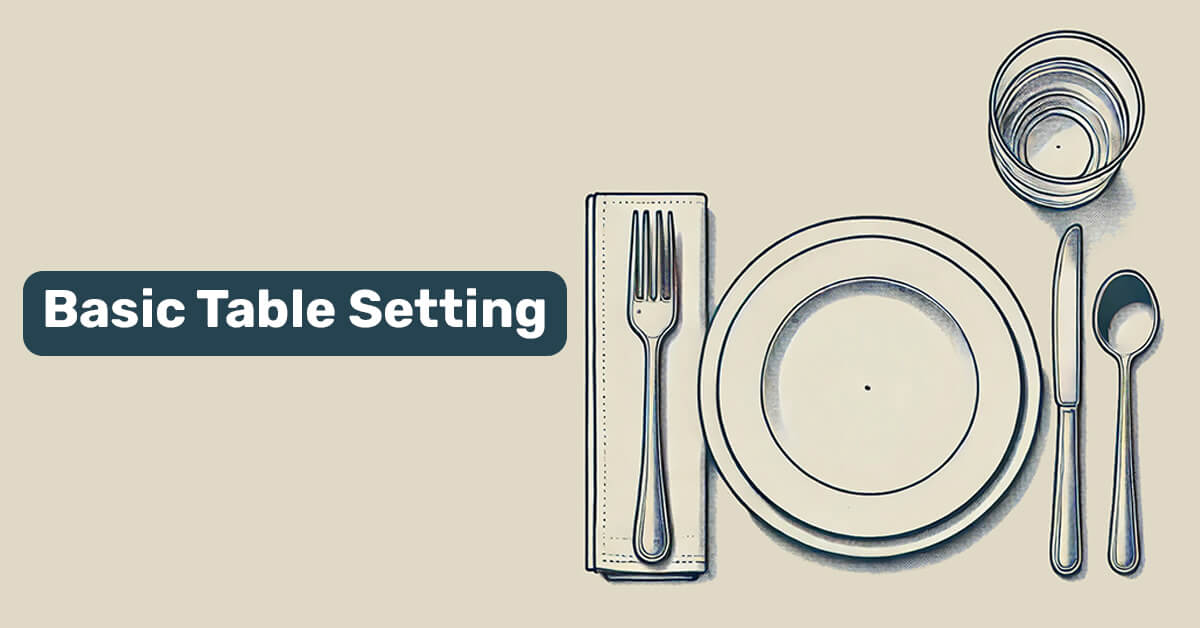
Use Case: Ideal for casual dining, breakfast, or lunch services.
Elements: One plate, one fork, one knife, and one spoon, accompanied by a glass.
Arrangement
- Place the dinner plate in the center of the setting.
- Position the fork on the left side of the plate.
- Place the knife on the right side of the plate with the blade facing inward.
- The spoon goes to the right of the knife.
- Position the water glass above the knife slightly to the right.
- Lay the napkin neatly on the plate or to the left of the fork.
Tips: Keep the setup simple and functional to ensure quick turnover during peak hours.
Formal Table Setting
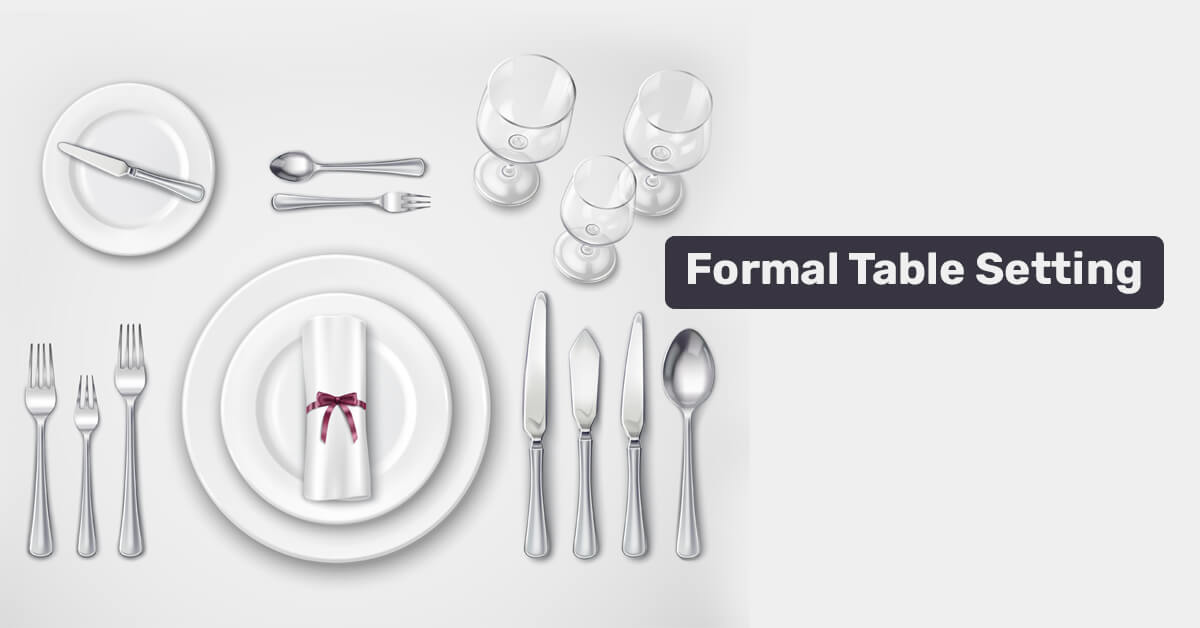
Use Case: Suitable for fine dining, formal dinners, or high-end events.
Elements: Charger plate, salad plate, dinner plate, multiple forks (salad, fish, and dinner), knives, spoons, bread plate, dessert fork/spoon, and three glasses (water, red wine, white wine).
Arrangement
- Begin with the charger plate as the base, placed at the center of the setting.
- Stack the salad plate and dinner plate on top of the charger plate.
- Align forks to the left of the plates in the following order (from left to right): salad fork, fish fork, dinner fork.
- Place knives to the right of the plates in this order (from left to right): dinner knife, fish knife, and soup spoon on the outermost right.
- Position the bread plate at the upper left corner of the main plate, with a butter knife laid horizontally across it.
- Arrange the glassware above the knives, starting with the water glass closest to the plate, followed by the white wine glass and then the red wine glass.
- Place the dessert fork and spoon horizontally above the charger plate.
Tips: Attention to symmetry and spacing is crucial for an elegant presentation.
Casual Table Setting
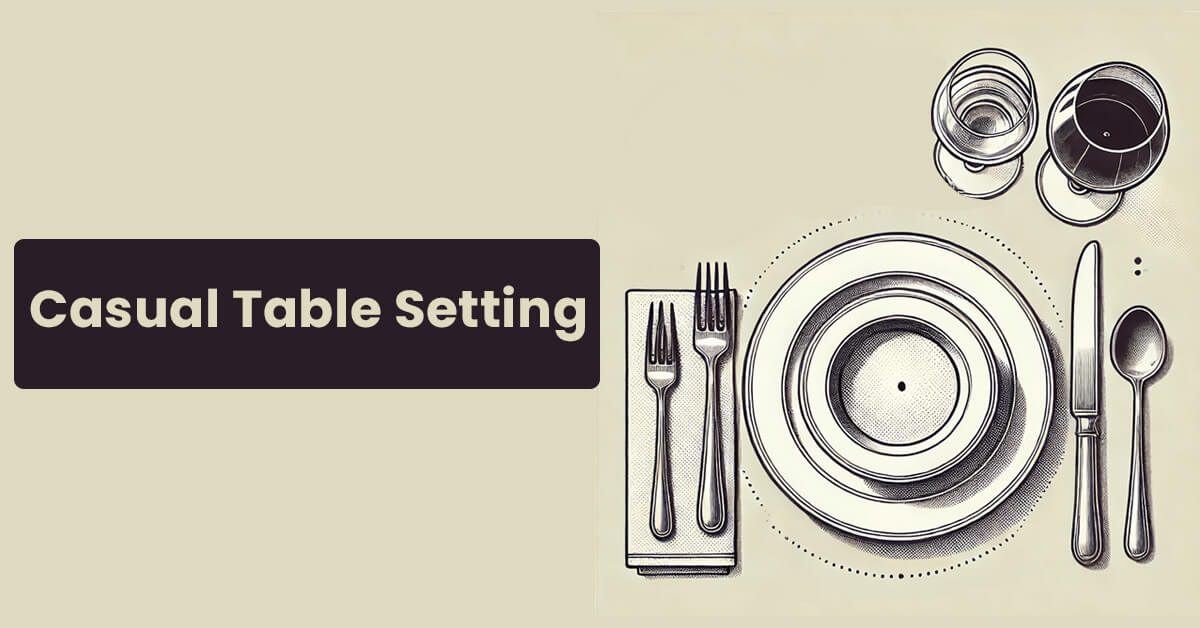
Use Case: Common in bistros, family restaurants, or relaxed dining environments.
Elements: Dinner plate, fork, knife, spoon, water glass, and napkin.
Arrangement
- Place the dinner plate in the center of the setting.
- Position the soup bowl on top of the dinner plate.
- Align the fork to the left of the dinner plate.
- Lay the knife to the right of the plate, with the blade facing inward.
- Place the spoon to the right of the knife.
- Position the water glass directly above the knife and slightly to the right.
- Place the wine glass to the right of the water glass, creating a diagonal arrangement.
- Fold the napkin neatly and position it on the soup bowl or to the left of the fork.
Tips: Combine simplicity with charm by incorporating small decorative elements that match the restaurant’s theme.
Five-Course Table Setting
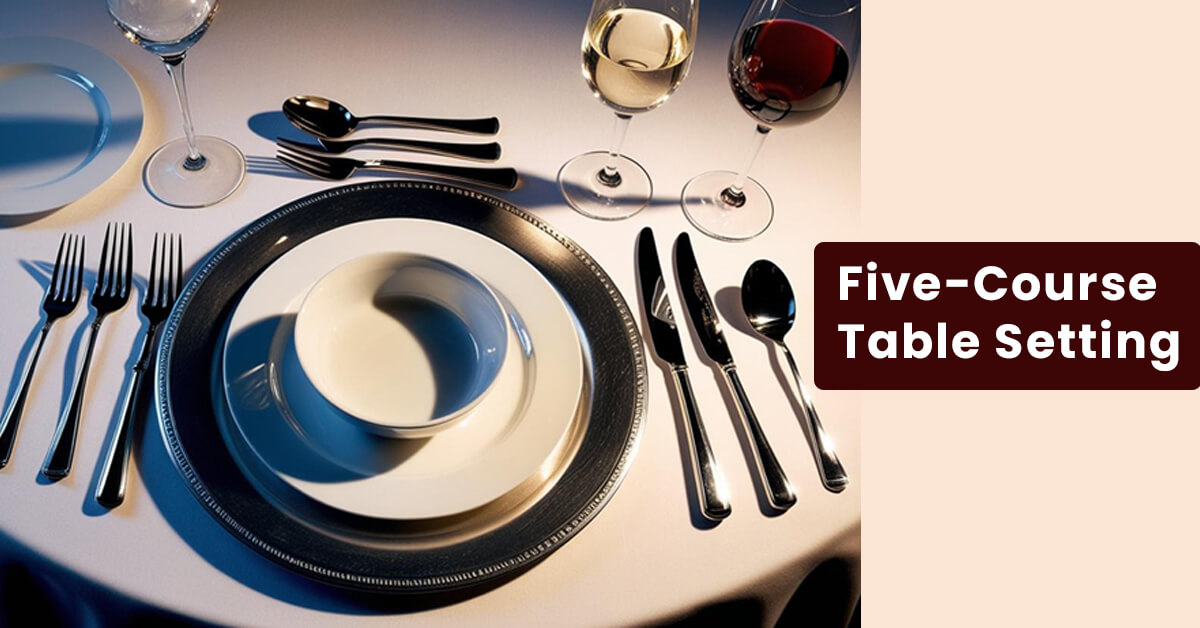
Use Case: Perfect for elaborate dining experiences with multiple courses, such as banquets or fine dining events.
Elements: Charger plate, soup bowl, salad plate, dinner plate, dessert fork and spoon, multiple forks and knives (fish, dinner, salad), bread plate, butter knife, and an array of glasses (water, champagne, red and white wine).
Arrangement
- Begin with the charger plate as the foundation, placed at the center of the setting.
- Stack the soup bowl on the charger plate, followed by the salad plate (placed during the course).
- Arrange the forks to the left of the plate in the following order: salad fork (outermost), fish fork, and dinner fork (innermost).
- Place knives to the right of the plate in this order: dinner knife (closest to the plate), fish knife, and soup spoon (outermost).
- Position the bread plate at the upper left, with a butter knife resting diagonally across it.
- Arrange glasses above the knives in a diagonal line: the water glass closest to the plate, followed by champagne, white wine, and red wine glasses.
- Align the dessert fork and spoon horizontally above the charger plate, with the spoon placed above the fork.
Tips: Precision and refinement are key. Use elegant decorations and align all elements perfectly for a luxurious feel.
Buffet Table Setting
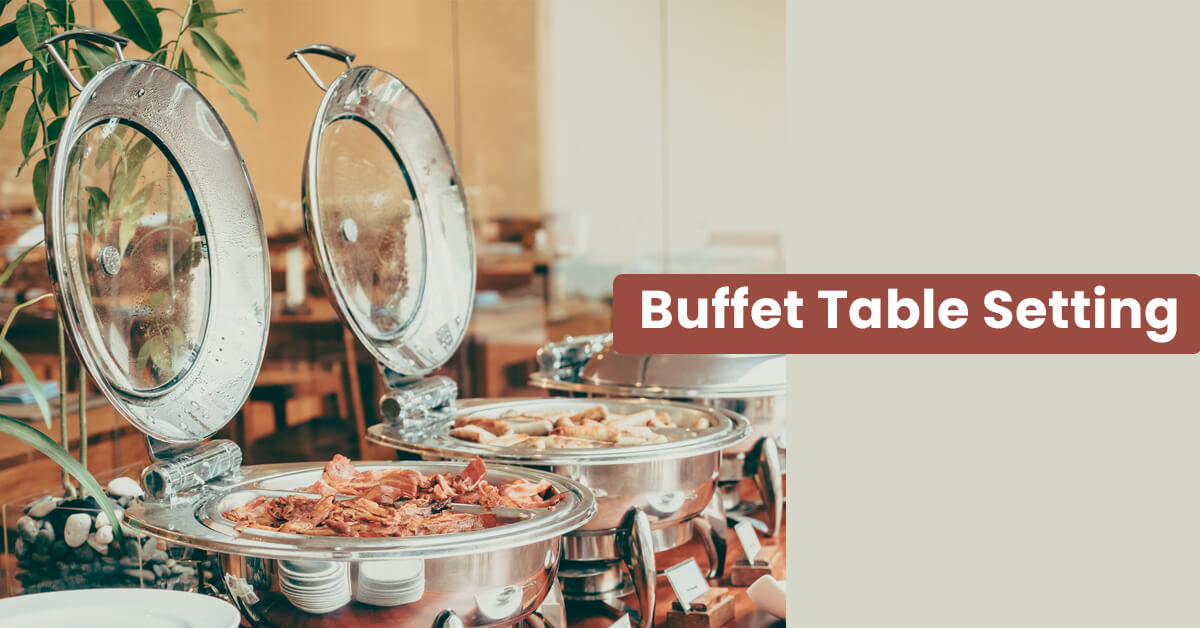
Use Case: Designed for self-service settings like weddings, corporate events, or brunch services.
Elements: Serving platters, bowls, utensils for self-service, plates, napkins, and glasses.
Arrangement
- Start with a stack of plates at the beginning of the buffet line.
- Place serving platters and bowls in a logical sequence (e.g., starters, main dishes, sides, and desserts).
- Utensils for serving (e.g., tongs, ladles) should be positioned near their respective dishes.
- Position glasses and beverages at the end of the buffet line to avoid diners juggling items.
- Arrange napkins near the plates or utensils for easy access.
- Use signs or labels for each dish to enhance the flow and reduce confusion.
Tips: Ensure sufficient spacing to avoid crowding and use decorative labels for dishes to enhance presentation.
Each table setting style caters to a specific dining experience, ensuring functionality and visual appeal. Choosing the right setup can elevate your guests’ overall experience and align with your restaurant’s identity.
The Role of Technology in Modern Restaurant Table Setting
Technology has transformed the way restaurants approach table settings, enhancing both efficiency and customer experience. Modern tools streamline the planning and execution of restaurant table settings, ensuring precision and convenience.
One of the most notable advancement is the integration of the QR code menu. These allow customers to access digital menus directly from their smartphones, reducing the need for physical menus and decluttering the table. Additionally, smart table displays offer interactive elements such as ordering options, personalized greetings, and payment systems, creating a seamless dining experience.
Reservation management tools now allow restaurants to pre-plan table arrangements based on party sizes, dietary preferences, or special requests. Virtual table-setting applications enable restaurant managers to visualize and customize layouts, ensuring each table aligns with the desired ambiance.
Technology not only adds sophistication but also minimizes errors in table settings. It empowers restaurants to create memorable experiences while maintaining efficiency and staying ahead in a competitive industry.
Conclusion
A well-arranged restaurant table setting is integral to creating exceptional dining experiences, but it’s only one part of a successful operation. To truly elevate customer satisfaction and streamline operations, modern tools like a tableside ordering system are essential. At Foodiv, we provide end-to-end solutions for restaurants, including an advanced Tableside Ordering System that enhances efficiency and boosts guest satisfaction. If your restaurant is ready to combine flawless table settings with cutting-edge technology, contact us today. Let us help you deliver a seamless and memorable dining experience!



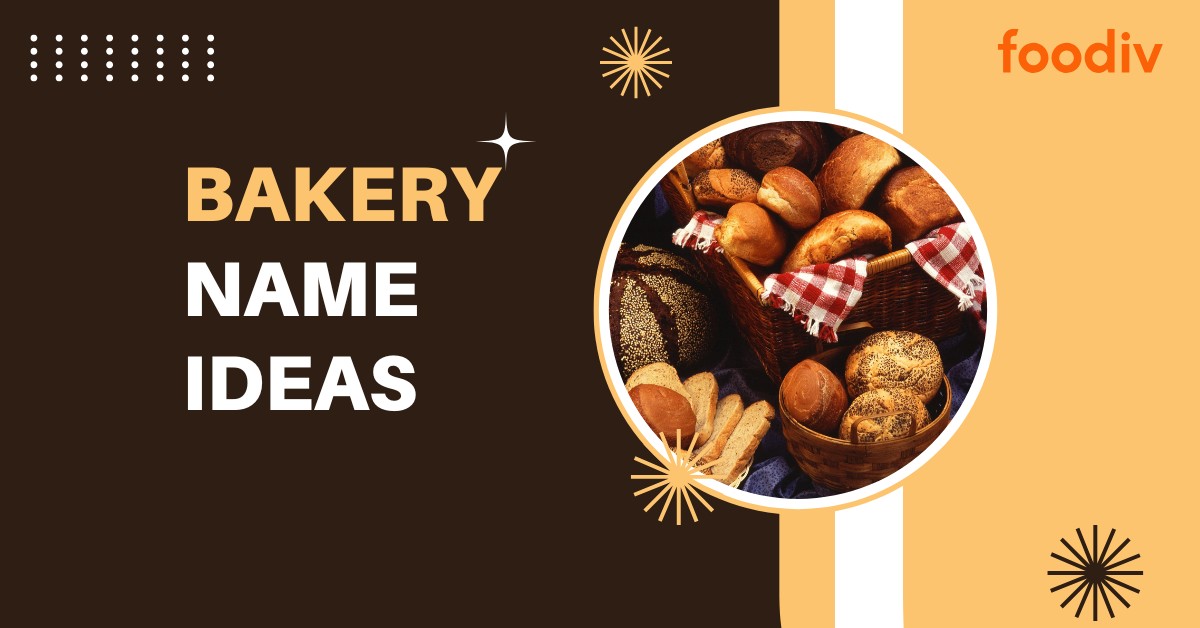
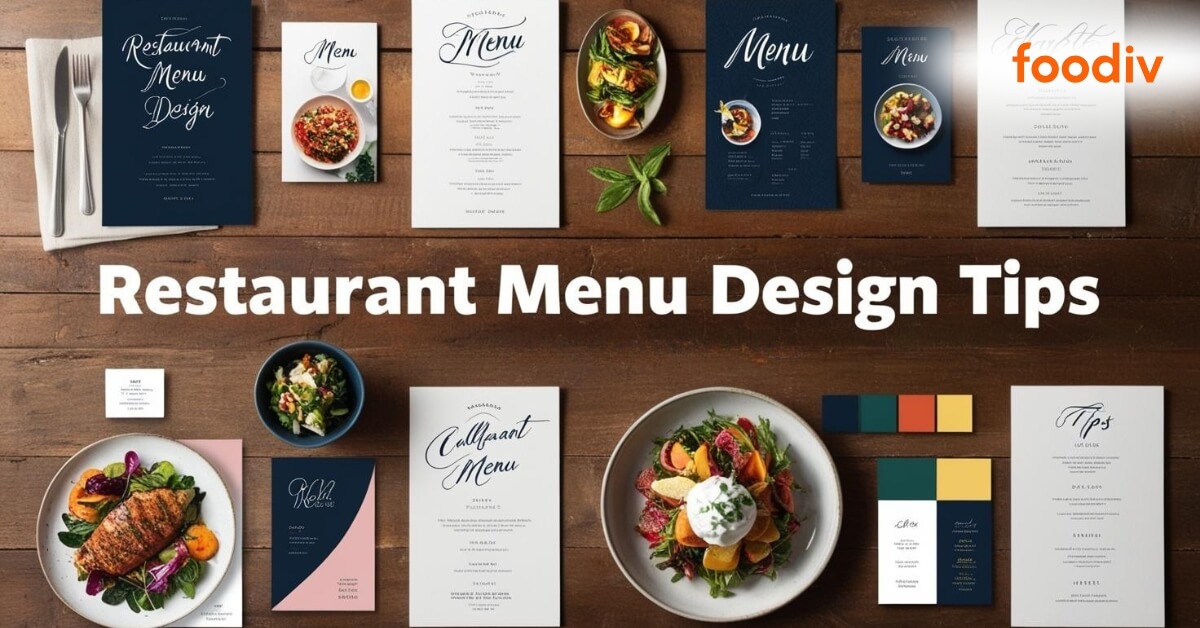
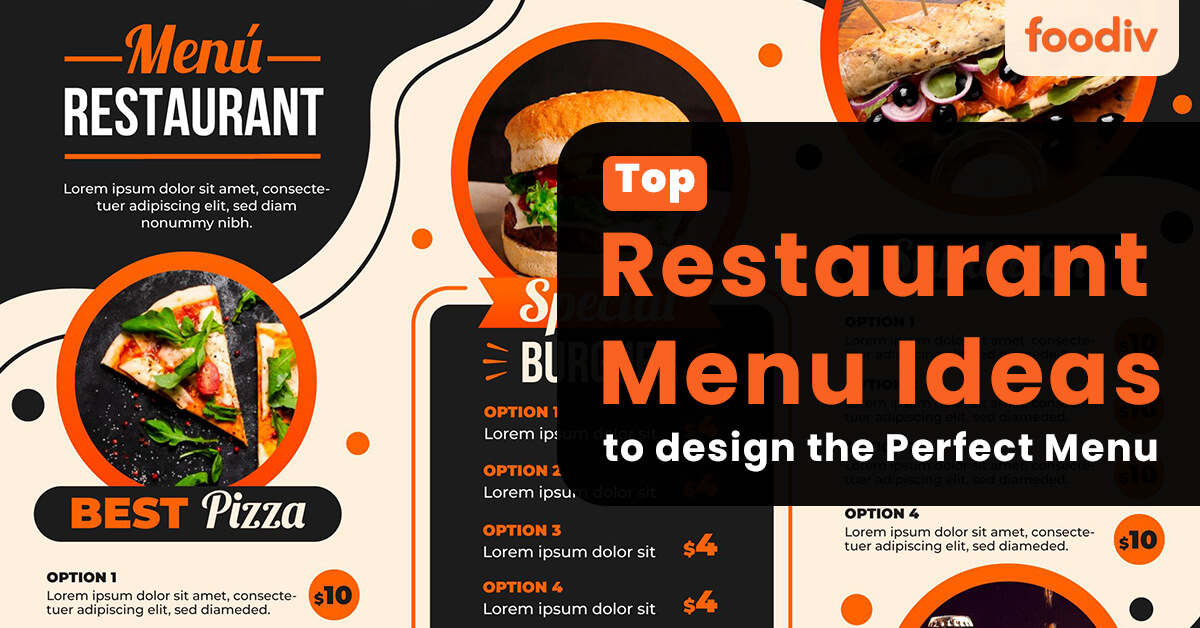
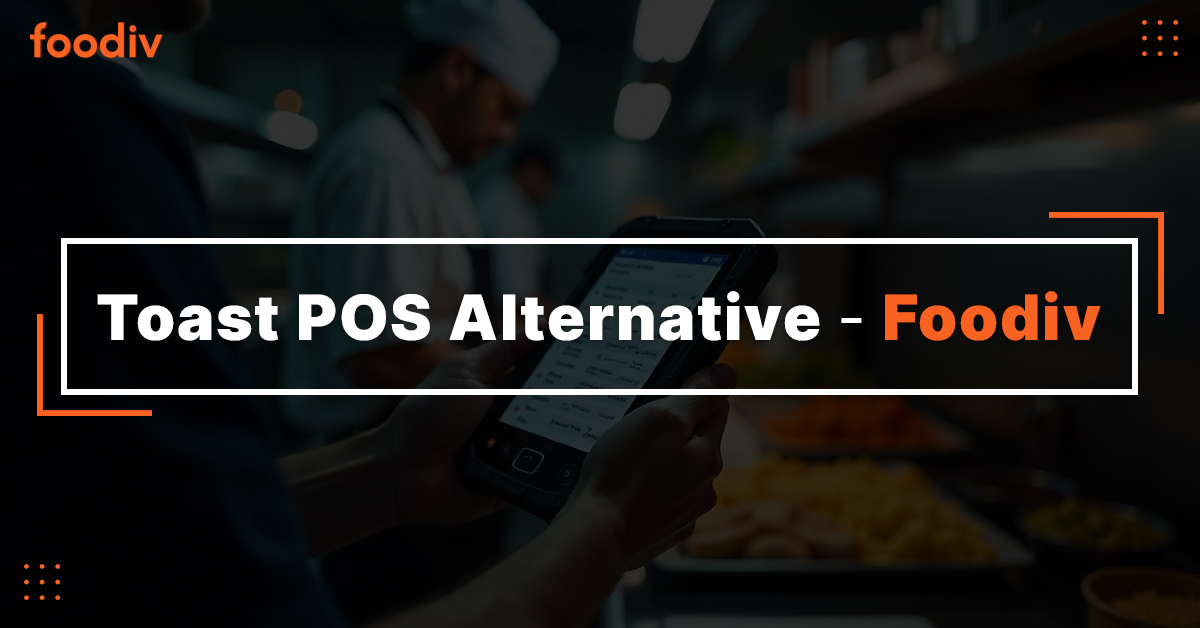

 A well-arranged restaurant table setting is more than just an aesthetic element, it is a cornerstone of an exceptional dining experience. From casual cafes to fine-dining establishments, a thoughtful table arrangement reflects the restaurant’s style, commitment to quality, and attention to detail. Guests often form their first impressions based on how the table is set, making it a crucial aspect of creating a warm and welcoming atmosphere. Properly arranged tables not only enhance the visual appeal but also ensure functionality and comfort for diners. This guide will walk you through mastering the art of restaurant table setting, helping you elevate your customers’ dining experience while strengthening your brand identity.
A well-arranged restaurant table setting is more than just an aesthetic element, it is a cornerstone of an exceptional dining experience. From casual cafes to fine-dining establishments, a thoughtful table arrangement reflects the restaurant’s style, commitment to quality, and attention to detail. Guests often form their first impressions based on how the table is set, making it a crucial aspect of creating a warm and welcoming atmosphere. Properly arranged tables not only enhance the visual appeal but also ensure functionality and comfort for diners. This guide will walk you through mastering the art of restaurant table setting, helping you elevate your customers’ dining experience while strengthening your brand identity.






